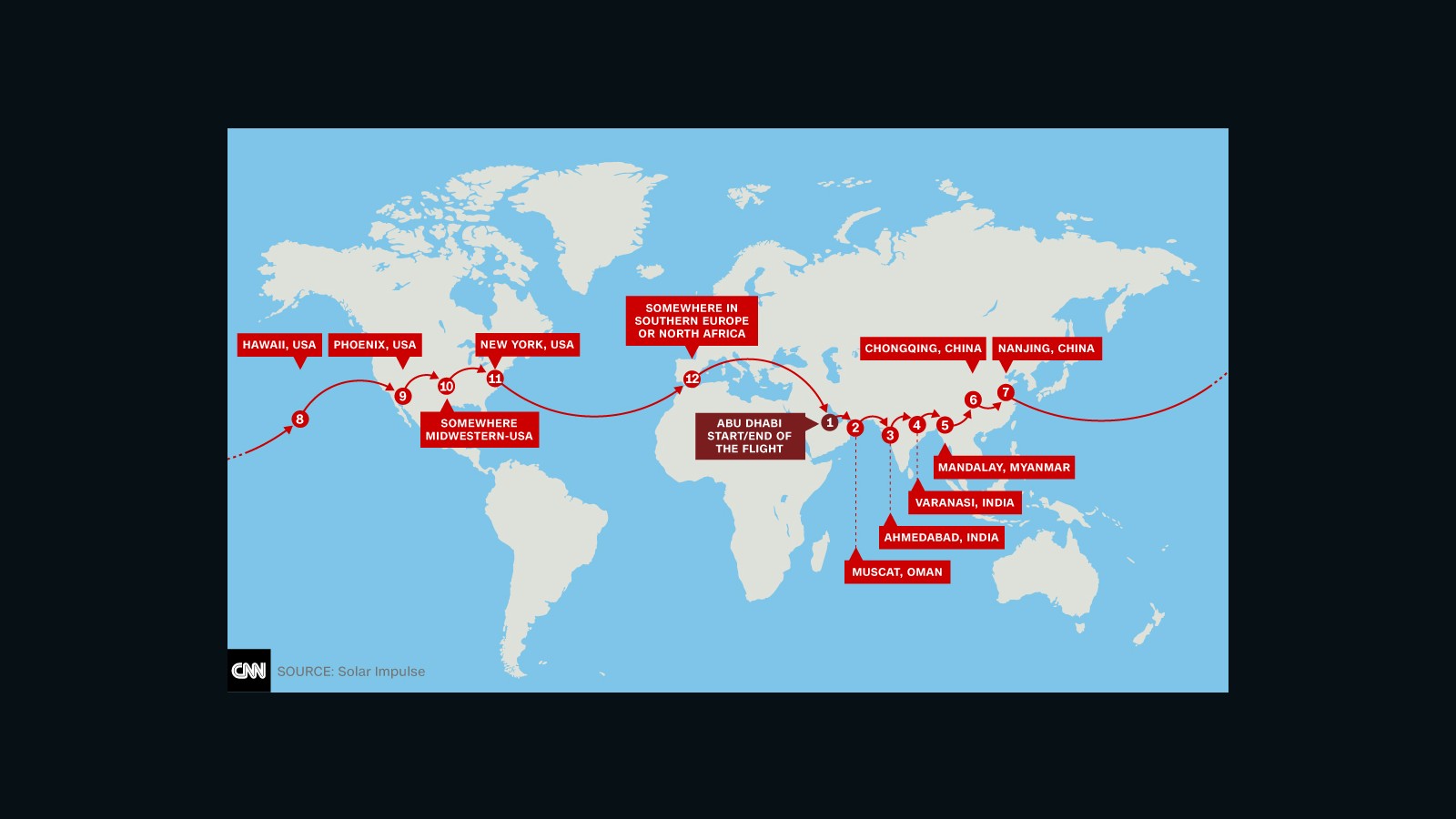What was supposed to be an
overnight pit stop in the southwestern city of Chongqing has now
stretched into a two-and-a-half week stay.
It's
an unexpected layover that is testing the patience of the pilots and
more than 60 team members, just a quarter of the way along a journey
that will cover some 35,000 kilometers (21,748 miles) over five months.
"You
can believe that your will can influence the weather," says pilot
Bertrand Piccard, who comes from a long family line of explorers. But
"then you'll be really disappointed because it doesn't work.
"Or you just know that it's an adventure you do with the forces of nature."
 |
Piccard,
along with Andre Borschberg, a Swiss engineer, are taking turns flying
the single-seater aircraft, which took off from Abu Dhabi on March 9 and
has successfully flown through Oman, India, and Myanmar.
There
is much at stake. Their mission, which the pilots say is aimed at
proving the power of renewable energy, and inspiring innovation, has
been 12 years in the making. In many ways, it has become Piccard and
Borschberg's raison d'etre.